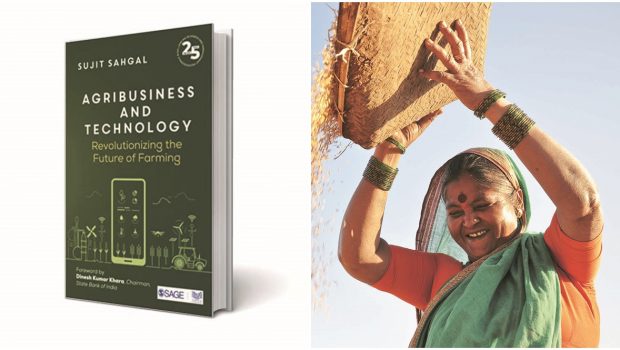Checking the grain drain | Book review: ‘Agribusiness and Technology: Revolutionizing the Future of Farming’ by Sujit Sahgal
India has emerged as the largest exporter of rice globally in the last decade and the country has emerged as one of the largest producers of agricultural commodities such as cotton, wheat, milk, sugarcane, fruits and vegetables, etc. The agriculture sector has experienced buoyant growth in the past two years. The sector, which is the largest employer, accounted for a sizable 18.8% (2021-22) in Gross Value Added of the country, registering a growth of 3.6% in 2020-21 and 3.9% in 2021-22. This comes at a time when all other sectors of the economy shrank as per global trends because of the pandemic.
However, the critical challenge faced by Indian agriculture is that more than 90% of the 140 million estimated farming families in the country have small landholdings.
Ironically, the focus of the policy makers has been to ensure that farmers get access to technical expertise. The book under review talks of several methods through which farmers with small holdings utilise traditional as well as modern technologies in pushing the frontiers of India agriculture further.
The main starting point of the book is the elaboration of a concept—Sustainable Solutions for a Lucrative and Independent Farming Model (SOLID)—that would help boost farmers’ income and stop the exodus of people from agriculture. For achieving the goal of SOLID, the book recommends a series of measures, including simplifying existing rules on land holdings for ensuring land consolidation, farmers taking up crops on the basis of purely agronomic considerations instead of the government’s minimum support price (MSP) announcements, and creation of mini-storage facilities on the ground. Other measures for realising SOLID are to ensure access to financing against stored produce, referred to as post-harvest financing, rational use of fertiliser and a conducive trade policy that does not impact domestic price formation. The author does acknowledge that for achieving this challenging task of SOLID, farmers need “a lot of handholding along the way” in adoption of modern methods, best practices, risk taking and business planning.
The book consistently makes an attempt to dispel the myth that small landing farming is not viable and technology can rescue and boost earnings from small holdings. The world over, whether in the USA or Italy, only a fraction of farms are really large, with the bulk of them being small. Precision farming technology, the book notes, does not need big land holdings. This method of farming uses technologies in reducing use of inputs (seed, water, power, labour, fertiliser and pesticides) while boosting yield and output.
The author also stresses on making farming lucrative through creation of collective farming where actual farming activities such as choice of crops, buying inputs, farming process and marketing are carried out under a single unit. Collective farming advocates the next phase of development of Indian agriculture after the formation of bodies such as farmer producer organisations (FPOs) or farmer producer companies (FPCs), which the government is trying to promote. The book also dwells on challenges faced by FPOs and FPCs in raising finances, hiring and retaining management personnel.
The author suggests that FPOs should focus less on asset-heavy activities and be more devoted to advisory, farming techniques and collective farming.
The book also captures the impact of the Covid pandemic on Indian agriculture and states that the pandemic has also made many families re-engage with farming. Making farming lucrative, the book argues, is the single most powerful way to stop the ‘grain drain’ , the term used for those who leave agriculture and take up non-agriculture activities.
The author acknowledges that basic mechanisation at the farm level is the building block for introduction of advanced technologies in agriculture. The author recommends key technologies such as regular soil testing, cultivation of crops with less soil moisture, water conservation, nutrient conservation, minimum use of pesticides (through use of drone and artificial intelligence), use of rainwater harvesting and solar panels for achieving SOLID.
In the concluding part, the book refers to ‘information’ as king, where information on weather, price prevailing in various mandis, acreage, pest and traceability can bring revolution in Indian agriculture. Also, widespread use of smartphones and highspeed fibre optic connectivity in rural India are driving India’s agriculture growth.
The author, who has been a financial market professional for close to three decades, provides insights into Indian agriculture with a sole motto – focus of all the agritech must be small farmers.
Agribusiness and Technology: Revolutionizing the Future of Farming
Sujit Sahgal
Sage Publications
Pp 264, Rs 550








Gloss